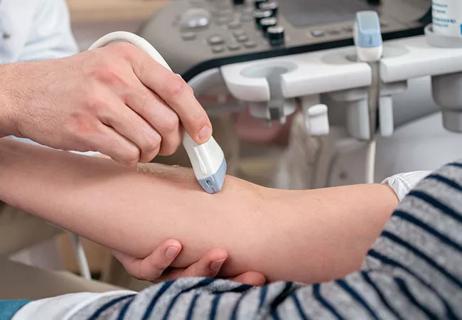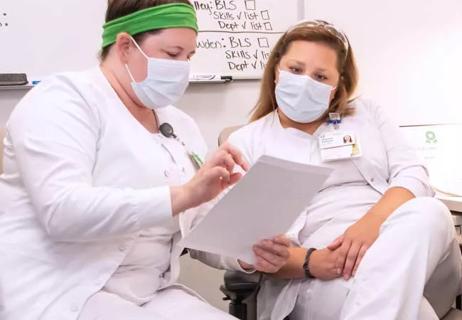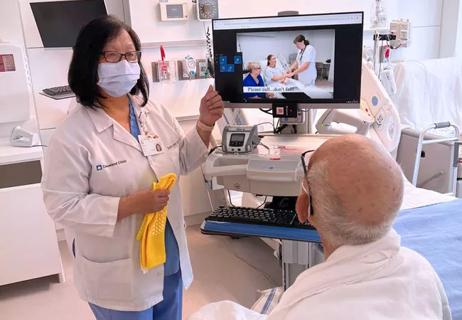“Patients need to trust their nurses and know they are present, knowledgeable and caring,” says Chief Nursing Officer Janet Schuster, DNP, RN, of Cleveland Clinic Lutheran Hospital. “If patients’ concerns are not communicated in real-time, the patient-nurse relationship can suffer.”
Cleveland Clinic is a non-profit academic medical center. Advertising on our site helps support our mission. We do not endorse non-Cleveland Clinic products or services. Policy
At Cleveland Clinic, nurse managers communicate with patients during daily rounds, but they may not have timely discussions with clinical nurses about patients’ care perceptions.
To promote real-time communication about nurse manager rounding findings with clinical nurses, Dr. Schuster implemented a simple visual management tool on two units and examined nurse presence, knowledge and caring attitude in a quality research project, using a pre- and post-implementation, two-cohort design.
Dr. Schuster developed 10 targeted questions related to potential patient needs that could influence patient satisfaction with nursing care. Responses were dichotomous (yes [positive]/no [negative]). Nurse managers asked patients questions during rounds.
Themes of the 10 questions were:
The tool allowed nurse managers to quickly gather critical information and display it to clinical nurses using a white board that was posted on the two units. “No” responses were marked on the white board in red and “yes” responses were marked in green for easy visual management of strengths and opportunities. The goal was to determine if the simple visual management tool would change clinical nurse behaviors that would improve patient responses about nurses’ presence, knowledge and caring attitude.
The tool was tested on orthopaedic and medical units over an eight-week period with a sample size of 315 patients. Nurses’ presence, knowledge and caring attitude were determined by comparing the percentages of patients who responded “yes” to questions before and after implementation of the visual management tool.
Post intervention, patient responses significantly improved on 60 percent of questions, reflecting that by visually sharing patients’ perceptions of needs that were met and unmet, nurses adapted clinical practices. Dr. Schuster asked nurses on the medical unit for feedback about the improvement in meeting patient needs: “They said they didn’t want to see red on the board.”
“This is a unique and simple tool that addresses patients’ needs in real time,” says Dr. Schuster. “It allows nurses to immediately learn patients’ perceptions of nursing/environment of care and experiences when hospitalized.”
Dr. Schuster says visual markers have long been used as a tool in nursing care and she was pleased to see that this simple visual management tool was a useful and effective strategy in changing nurses’ behaviors. “Project results should lead to new research in this area,” she says.
In addition to Dr. Schuster, members of the research team included Katrina Hartig, MS, BSN; Kathleen Wirtz, BSN, RN; Barbara Gill, BSN, RN; and Lee Anne Siegmund, PhD.

Study shows ultrasound can be valuable tool for improving patient satisfaction by reducing failed IV insertions

New system uses vital signs to predict need for further intervention

Findings reveal personal and professional factors that influence nurses’ interest in medical research

Nurse scientists bridge divide between bench and bedside

Individual and population factors play a role

Study looks at cardiopulmonary arrest and activation rates

Video education and nurse-led reinforcement help with fall risk awareness

Further research into collaborations may help strengthen nursing science